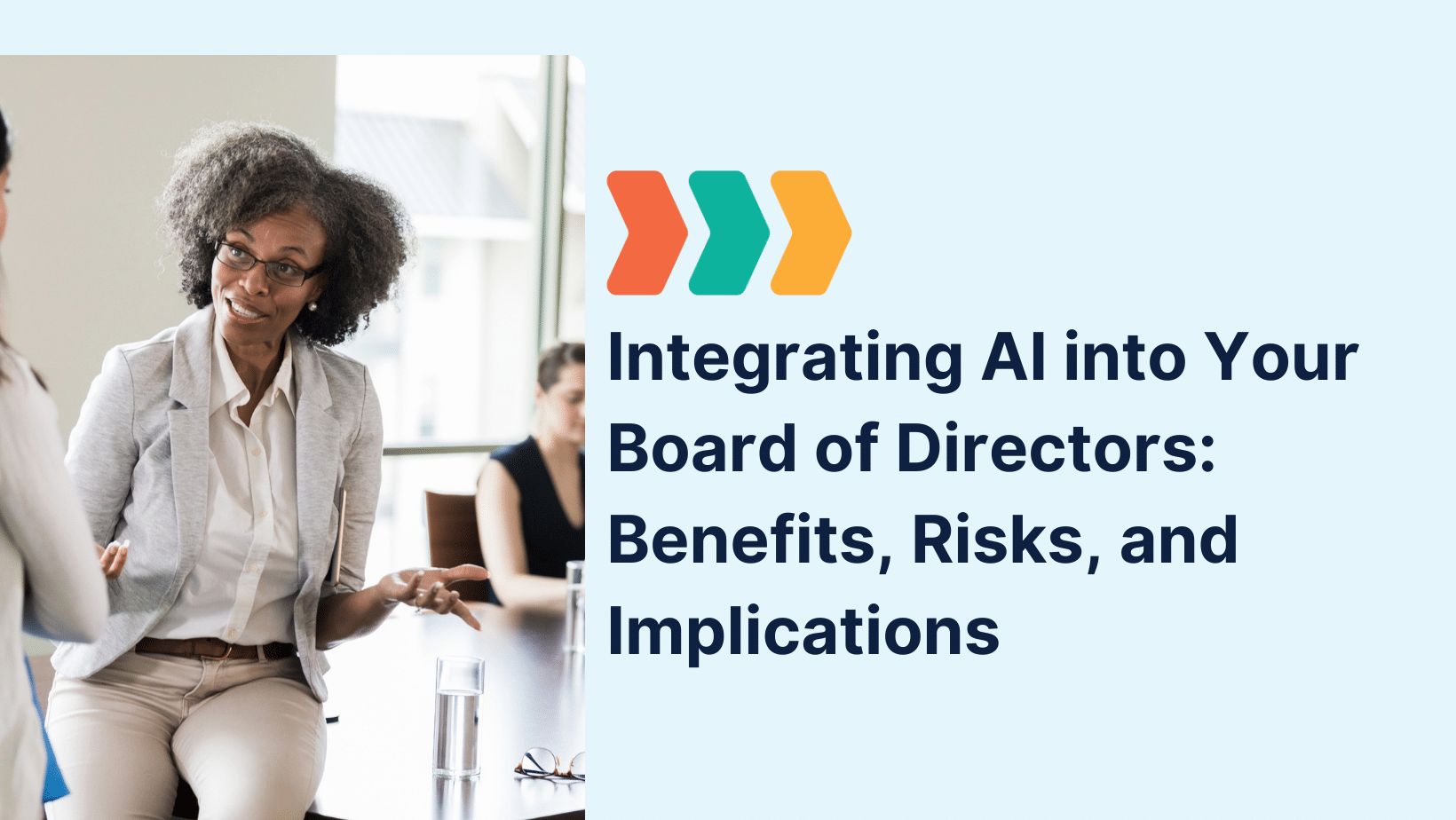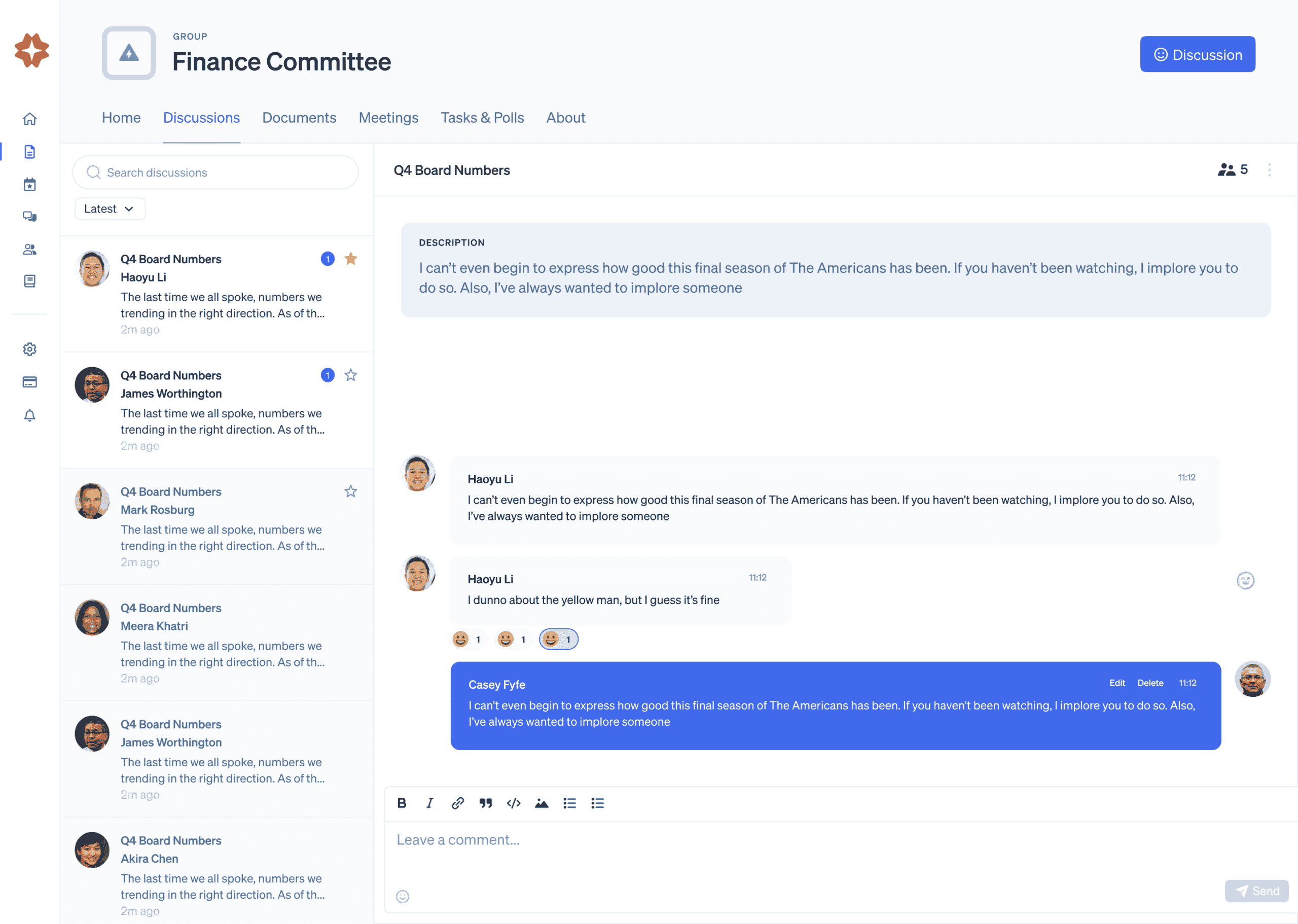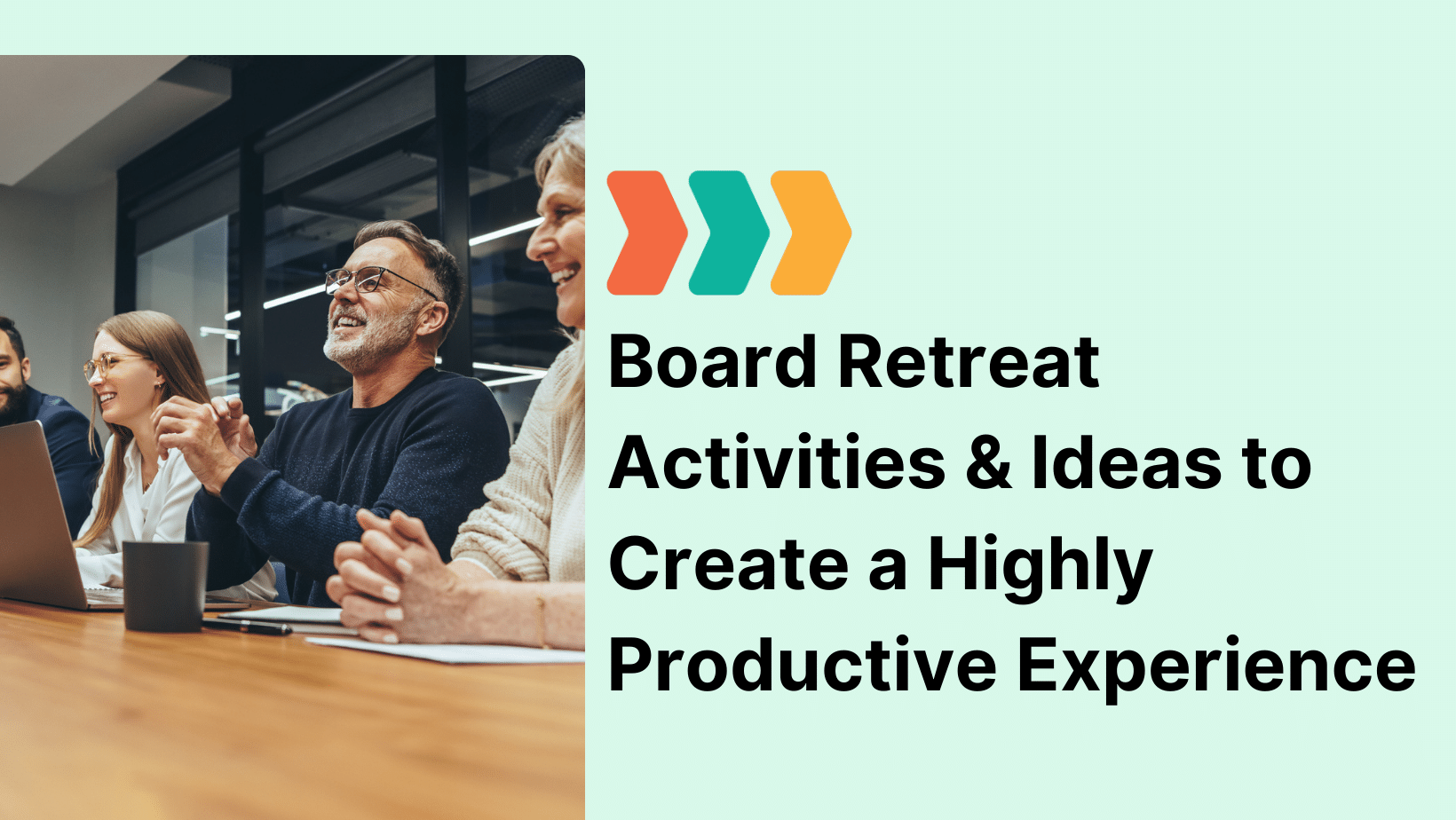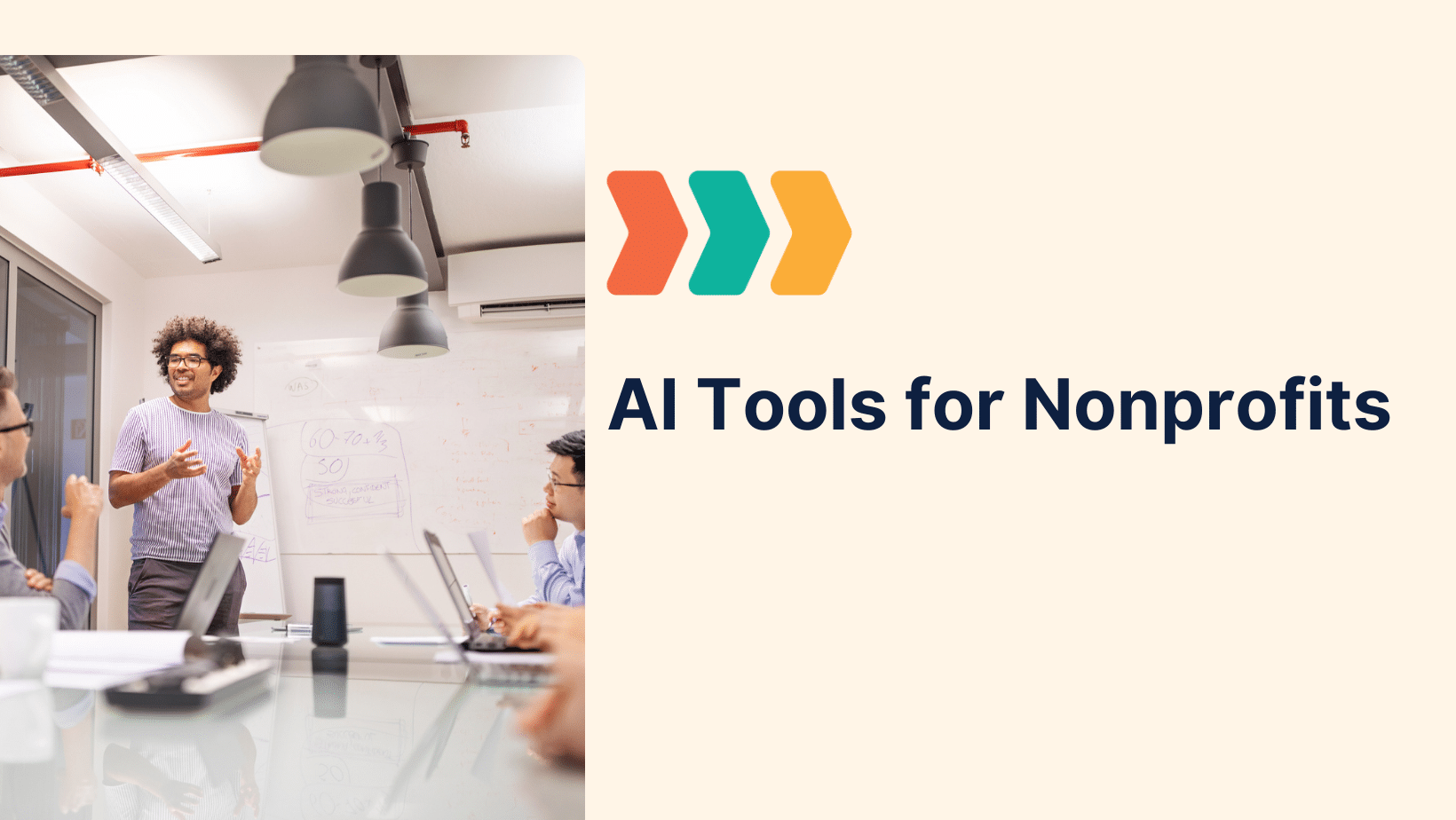Artificial intelligence (AI) is everywhere today. From social media apps to ChatGPT, AI is becoming integral to work and life. Corporations and nonprofits know this, too. They’re using AI across their organizations, including their boards of directors.
The sudden onrush of AI can have any nonprofit leader’s head swimming.
- Why would my board of directors need AI?
- What can this technology actually do for us?
- Am I missing out on something valuable?
- How would I even start implementing AI with my board?
Integrating AI into your board of directors and their operations is a key place to begin. AI can produce amazing benefits for you, your board, and the people you serve. It also poses risks and vulnerabilities worth deeper consideration. Now’s the time to explore AI’s benefits and risks to make the best decisions for your board and organization.
From Science Fiction to Fact of Life: How AI Technology is Rapidly Improving Board Operations
After years of exploration, AI is creating a large impact in for-profit companies. Machine learning and robotic process automation streamline operations. Predictive analytics helps prepare more accurate forecasting. Customer engagement tools help clients resolve issues faster.
Generative AI’s entrance into the market has opened new use cases and opportunities. For-profit companies’ boards of directors are making generative AI a strategic priority. Recent surveys found that 76% of companies have explored generative AI in at least one area. Seventy percent also said their boards knew enough about AI to decide on company AI policy.
Exposing boards to generative AI can help develop their AI knowledge and confidence. Corporate boards already use AI to ease operational difficulties and save time. What functions have boards found especially useful so far?
- Meeting scheduling automation
- Board document generation and preparation
- Board and committee meeting transcriptions
- Summaries of key decisions and action items for post-meeting distribution
- Follow-up and administrative duties support
Many boards are early in adopting AI, with generative AI as a specific focus. For example, board leaders use AI to generate much of the data and reports fueling board meetings. A tool like ChatGPT collects reports into their board books. AI then highlights the best insights for decision-making.
An AI-powered meeting scheduler selects the best date and time for the meeting. ChatGPT integrates that information into a ready-made agenda. Board members arrive, ready to discuss strategy and decision-making.
Generative AI’s power is helping for-profit boards make smarter decisions faster. But that power doesn’t belong only to for-profit companies. Nonprofit boards face similar decisions to make and operational challenges to overcome. And they must do so while maximizing the use of valuable organizational resources.
AI can help nonprofit boards run smoother meetings and support big decisions. It’s even better if that AI is trained on nonprofit-specific data and scenarios, like Boardable AI. Such a model reflects nonprofit boards’ unique needs and opportunities.
Are You Falling Behind? Navigating AI FOMO and Incorporating AI Into Your Board of Directors
Naturally, a new technology’s promise and potential push people toward quicker adoption. Leaders don’t want to fall behind on great opportunities. The fear of missing out (FOMO) encourages many people to adopt new technology, including artificial intelligence.
It’s thrilling to try something new. Plus, the emotions behind FOMO are powerful and worth heeding. Yet, FOMO-based decisions may not lead to using AI well.
Rushing headlong into AI can lead to missteps and mistakes. And those can cause disastrous consequences. In 2023, the National Eating Disorder Association replaced human helpline operators with an AI chatbot. Within a week, the chatbot consistently delivered dangerous, negative advice to users. People with eating disorders did not receive support they needed. NEDA paused the chatbot and rehired human staff. But, press attention still damaged NEDA’s reputation.
It’s tough to resist FOMO, but reacting to it often leads to unsustainable implementations. Instead, board leaders should channel that energy into developing a thoughtful implementation plan that reflects the organization’s and beneficiaries’ real needs.
Avoid FOMO and Build Smarter with an AI Plan
An AI plan should call upon your board’s strategic thinking and long-term planning skills. Taking your time to consider AI’s use cases, benefits, and risks lets FOMO cool down. Once everyone is thinking strategically, you and your board can approach implementation with clearer eyes and intentionality.
Start this journey by creating a log to track use cases AI could support. Consider how tough AI implementation could be, and assess potential risk factors. Remember that we shouldn’t use AI just for AI’s sake. It should solve a key need in a more efficient or effective way. Once you’ve logged use cases, you can then take on one promising use case at a time, such as transcribing board or committee meetings.
You should also share stories of similar nonprofit organizations and their AI use and policies. Reach out to those organization’s leaders to see if they’d willingly provide more information or offer their membership. You can learn about benefits and pitfalls to help guide your plans.
You can follow generative AI’s momentum while better understanding AI’s impact. Strategic integration will quell the FOMO feelings and limit implementation mistakes. Your board can then explore AI across the organization, including helping them in their governance duties.
Understanding AI Benefits, Risks, and Implications for Board Governance
A vital board role is their responsibility to provide good board governance. Governance functions span the entire organization and include:
- Providing oversight on the organization’s mission, vision, and strategic direction
- Ensuring the organization has enough funding and resources
- Hiring and managing key organizational management personnel, including the executive director
- Complying with legal and regulatory requirements
- Strengthening program and service effectiveness
- Upholding the integrity and reputation of the organization
These complex duties demand significant critical and analytical thinking and creativity. Board members are busy people, and they love their organizations. Still, leaders must use their board’s energy carefully.
How Can AI Help Board Governance?
AI can help boards save time and effort on the tactical work of governance. That means board members can then use their minds and energy for creative strategy development. For example, board members might revisit a program’s delivery model for improvements. Without AI, staff would be required to manually collect and analyze data for answers. AI-powered data analytics can review reams of data and produce high-level insights. Humans include these insights in their own reviews, and they make the final call.
It’s important to remember that AI makes mistakes and can amplify biases. It’s never a good idea for boards to completely outsource the data analysis process to AI. Still, AI can identify missed opportunities or back up advocated changes with data.
It’s one of many ways AI can benefit board governance. Others include:
- Streamlined operations between boards, management, and the entire organization
- Time returned to build a more informed and thoughtful strategy
- Another set of “eyes” to bolster key decision-making
- Increased engagement among board members and the organization
Understanding AI’s Risks to Your Board
While AI can help boards, it’s far from perfect. Risks like mistakes in interpretation or bias amplification exist. Board members must weigh AI’s risks against its potential returns.
Common risks associated with AI worth considering include:
- Accuracy and reliability of models and output
- Transparency in AI model design and training data
- Explainability of how models reached their conclusions
- Organized data privacy and security
- Legal and regulatory compliance
- Adverse effects on human staffing and job satisfaction
Each of these risks can challenge the board’s governance role. For instance, NEDA’s chatbot failure reflected leadership’s lack of understanding the AI’s design, goals, and training data. NEDA and its vendors could not explain the model’s path to reaching its outputs. And NEDA’s leadership didn’t adequately consider the damage that replacing human staff could cause.
NEDA should have spent more time evaluating the AI model and its fit within the organization. A smaller roll-out to test the chatbot would have offered more data to decide on using it further. And clearer communication with human staff and beneficiaries on the purpose behind using the tool would have helped leaders better understand how to pair humans with AI.
Using AI well means you and your board should evaluate AI’s risks and prepare plans to mitigate them. Plans should detail each risk, expected solutions, and potential positive and negative outcomes. Also include your AI vendors in this process. For example, ask them about the technical, administrative, and physical data safeguards. If available, have them present certification from accredited bodies. For instance, Boardable’s systems and policies are SOC II, HIPAA, and GDPR compliant.
Understanding AI risks is an important part of your larger AI plans. Conduct a comprehensive risk evaluation, and you and your board can lay the foundation for the best path forward.
Set a Strong Foundation with an AI Framework
Intelligent AI use begins with building the right infrastructure to enable its success. Any AI product should seamlessly integrate with the other tools and systems you use.
However, “infrastructure” doesn’t include only the technical elements. Successful AI implementation requires a strong framework that extends across the organization. It involves preparing humans to embrace AI and understand when, where, and how they should use it.
Robust AI frameworks often include considerations like:
- Providing staff and board members with training and continuing education on AI use
- Employing consultants and professionals focused on AI to assess use cases
- Hiring staff members who have worked with AI tools before
- Outlining clear sets of AI governance policies, processes, and procedures
- Ensuring a human touches every part of any AI workflow
Boards own organizational strategy. That means board members should work with management to build an AI strategy. AI adoption will crumble without a solid foundation. Your board can help lay the strongest foundation possible.
Using AI Ethically to Meet Compliance and Social Responsibility Goals
For-profit boards are already engaged in understanding the responsible use of AI. New technologies can invite new compliance challenges, especially around data privacy and security. Nonprofits must also consider social responsibility goals and objectives. They carry an extra duty to protect the communities they serve.
A board of directors’ duties include organizational compliance with applicable laws and regulations. It’s a matter of protecting the organization’s integrity. As such, any instance of AI should adhere to current regulations and best practices.
Knowing where to begin can frustrate many organizations. Start with example frameworks like the OECD AI Principles or the NIST AI Risk Management Framework. Each offers standards and best practices to build your approach to AI. And they all champion the values of transparency, security, safety, and accountability.
Your chosen AI vendors should also help your compliance and social responsibility needs. Vendors should share their models’ data security policies. Their adherence to high standards will help your organization meet AI ethics goals.
Fortify Your Board of Directors with Help from Boardable AI
Boards of directors offer so much to the organizations they serve. Often, that service includes heaps of administrative work primed for AI’s help.
You don’t need to upend every organizational process with AI overnight. But you want the most from your board. And board members should have a fulfilling, productive service experience. Taking the first steps to deploy AI can help you achieve that vision.
AI customized for nonprofit organizations is a great first step. The right tool can streamline operations and support your board’s operations. Resources like Boardable AI can quickly integrate into your organization and help you explore what’s possible.
See how Boardable AI can transform your board of directors’ operations today.




